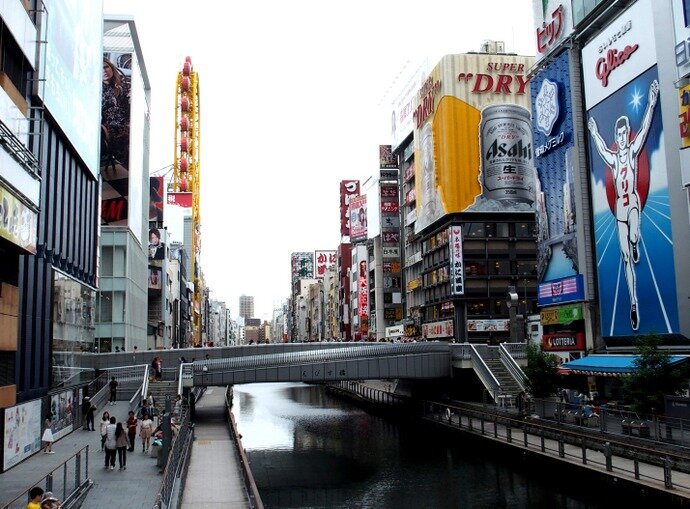- TOP
- Project Introduction
- That famous bridge in Osaka that draws tourists
PROJECT INTRODUCTION
That famous bridge in Osaka that draws tourists
| Location : | Osaka City, Osaka Prefecture |
|---|---|
| Period : | 2004 |
| Client : | Civil Engineering Division, Public Works Bureau, Osaka City |
Osaka City Ebisu Bridge Replacement Project
The Ebisu Bridge is a famous tourist spot in Osaka. The meaning behind its name is “a bridge to the Ebisu Shrine in Imamiya Village (Imamiya Ebisu Shrine).” Since the bridge was built, it has been repaired and replaced 13 times. In 1878, the bridge was converted into a steel bridge, and in 1925, into a reinforced concrete arch bridge. The current bridge was completed in 2007. It was planned as part of the Dotonbori Riverfront Development Project under the theme “Aquapolis Osaka,” and a design competition was held with Japanese and international applicants. The winning design, which conceived of the bridge as the “navel” of Osaka’s Minami (south) area, became the basis for the new bridge.
Today, the bridge is a major tourist attraction located in the center of Dotonbori. It provides a view of the huge neon signboard of the Glico running man, the Don Quijote Ferris wheel, and other landmarks that make Osaka’s Namba area immediately recognizable. The Ebisu Bridge also serves to connect the Shinsaibashi and Ebisubashi shopping districts. Tourists who visit Dotonbori typically enjoy various foods and drinks in the area as they walk toward Ebisu Bridge. After that, they enjoy shopping in the shopping districts and take photos at Ebisu Bridge to mark their visit.
Ebisu Bridge was due to be replaced because of the aging of the bridge structure and the need for measures to discourage people from jumping off the bridge. CTI Engineering was responsible for the detailed design. We faithfully reproduced the bridge’s circle-shaped slope and the LED lighting on the surface of the water, while ensuring the safety of pedestrian traffic and connectivity to the boardwalk. The new Ebisu Bridge has been designed to create a dramatic effect with a circular public space on the bridge, while incorporating a slope along the edges of this space that allows people to enjoy changes in the scenery as they descend toward the riverfront.
